Lancashire D-day veteran tells of his amazing war services all around the world
and live on Freeview channel 276
One of those veterans is 94-year-old Ken Benbow from Garstang whose wide-ranging service in the Navy saw him take part in most of the important theatres of war including D-Day and in the Pacific for the preparations for the invasion of Japan just before the US dropped the atomic bomb which ended the war.
Ken was working as a 14-year-old delivery boy in 1940 in Oswestry when survivors of the Dunkirk evacuation came through the local railway station.
Advertisement
Hide AdAdvertisement
Hide AdHe said seeing the wounded men inspired him to try to join up but he had to wait three years before being accepted for the navy for training at HMS Raleigh and then being assigned to the anti-aircraft and anti-submarine sloop HMS Crane commanded by RG Jenkins.
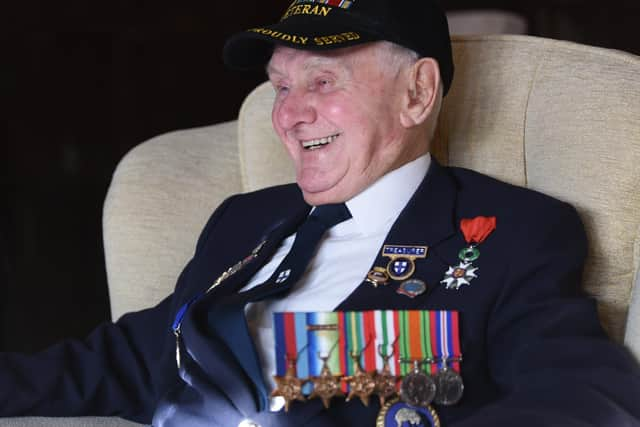

Ken’s ship was first assigned to help protect the vital Atlantic convoys from the USA bringing much needed supplies to Britain along with sister ships HMS Chanticleer and Pheasant, but then was sent off to Gibraltar and to cover the invasion of Sicily by the joint American and British forces.
In September of 1943 Ken, whose post was in the ship’s magazine supplying the shells for its four inch guns up top, found himself in the Bay of Biscay off France hunting U-boats using the Asdic echo-location system the ship carried.
The following month HMS Crane was back in the Atlantic protecting convoys.
Advertisement
Hide AdAdvertisement
Hide AdIt was there that one of his most memorable incidents occurred, when his captain ended up facing a court martial but ended up coming away with an award.
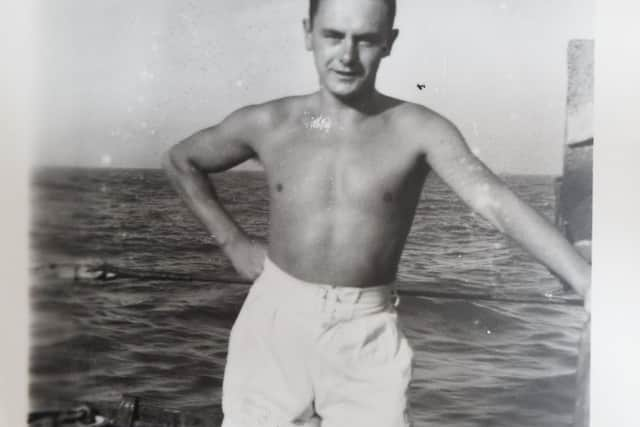

Ken said: “The Atlantic could be very rough. You would get a 70 degree roll of the ship in the waves.
“The worst was when the ship was going up and down. It used to bang you about quite a lot.
“There was a convoy coming over from Newfoundland and it had reached the middle area of the Atlantic called no-man’s land where there was no air cover. That’s where the U-boats used to wait about a mile apart. We were there to meet it and escort it to Britain.
Advertisement
Hide AdAdvertisement
Hide Ad“We had already had few runs looking for U-boats and had used most of our depth charges but not hit anything.
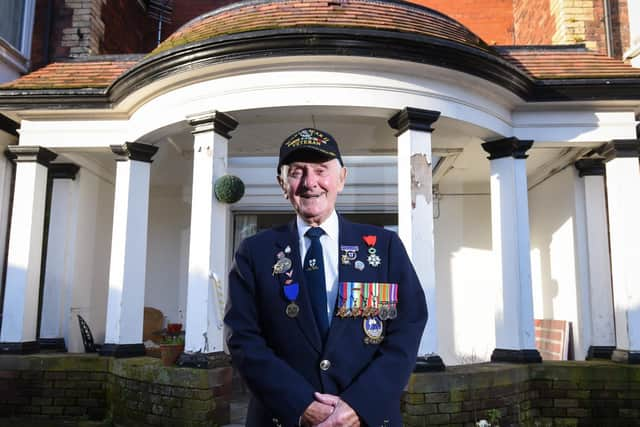

“There were five ships in our 7th Escort Group including Pheasant and Chanticleer, we had one at the front of the convoy one on the Port and Starboard and us and the Chanticleer at the stern.
“We had just got our air cover back when a Catilina reported a U-boat in the area. Chanticleer went off to investigate and it had only been gone a few minutes when we saw a huge puff of smoke.
“Their captain came over the Tannoy saying he had been hit by a torpedo and the ship split in two.
Advertisement
Hide AdAdvertisement
Hide Ad“Out captain immediately gave the order to go hard a port and we turned to go after it. We got an Admiralty order to go alongside and get the crew and important papers off and then torpedo the Chanticleer. But it was our sister ship. The five ships had been together for a while and we knew all the crew.
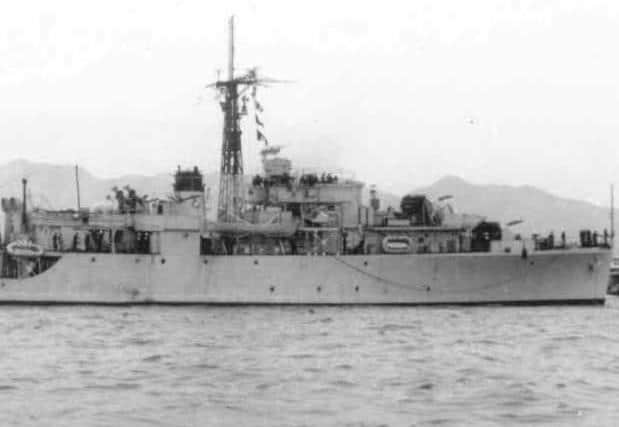

“The U-boat was still around so we did a few depth charge runs until we only had three left. The captain ordered them lashed to empty oil drums which had holes put in them and then dumped in the sea.
“He then ordered the four inch guns fired at the sea to make them sound to the submarine like more depth charges.”
He said the barrels sank slowly and, over a period of time, each went off making the submerged German submarine think they were still hunting her while a tug came up and towed the Chanticleer home.
Advertisement
Hide AdAdvertisement
Hide AdKen said: “When we got back the captain was court-martialed for disobeying a direct order to sink the Chanticleer, but in the hearing he told them how we were all so close, like family, they let him off and he ended up being mentioned in despatches for his actions.
“I have never heard of a ship firing its guns at the sea to confuse a U-boat.”
Ken’s amazing tour of the world during the Second World War continued and the ship was credited with HMS Cygnet with the sinking of U962 in the Atlantic, one of two kills for the Crane, before she was called in 1944 to cover the invasion of France at D-Day.
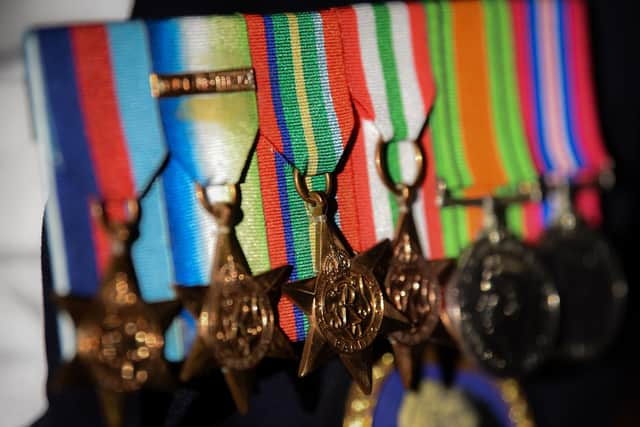

Ken said: “There were ships as far as the eye could see in the Channel. We spent a few days just helping escorting troopships and landing craft and providing anti-aircraft cover.
Advertisement
Hide AdAdvertisement
Hide Ad“We were expecting a lot of air attacks from the Germans, but they did not come. Instead, the sky was black with aircraft with our paratroops flying over. It was an amazing sight.”
Ken’s ship was later sent through the Mediterranean to the Suez Canal and on to Aden, Sri Lanka and Australia to join the fight against the Japanese Imperial forces in the Pacific.
“After a long break in Australia they joined the British and US forces building up for what they thought was to be the invasion of Japan which everyone felt would be a bloody affair.
“The Japanese had sworn to the Emperor that they would fight to the death over every bit of land so no-one was looking forward to it.
Advertisement
Hide AdAdvertisement
Hide Ad“We were with what they called the British Fleet Train with battleships, aircraft carriers and all sorts ready for the journey to Japan. Off Okinawa the fleet was attacked by kamikaze planes. It was terrible to see.
“We were sailing to Japan when we suddenly got the order to turn round. The Americans had dropped the atomic bombs and the war was over. We later sailed to Tokyo.
"Our captain was present on the American ship when the Japanese singed the surrender.” ( It was done in Tokyo Bay aboard the battleship USS Missouri.)
Later the Crane escorted an aircraft carrier full of Allied prisoners of war who had suffered terrible deprivations in the Japanese prison camps. It was also on duty around the Pacific islands searching for remaining, isolated Japanese soldiers who did not know that the war was over.
Ken left the navy in 1946.
Advertisement
Hide AdAdvertisement
Hide AdAfter the war he came to live in the North West where he worked as a representative for agricultural supplies a job he was suited for as his parents had done that in Oswestry.
He moved to Garstang with Ada to be near her sister and worked his way up to be a director with 16 reps and 18 engineers selling fuel oils and tractor fuel.
He retired in 1990 and, like many D-Day veterans was awarded the Légion d’Honneur by the French Government in 2016 in thanks for their efforts in liberating the country from Nazi rule.
Ken said: “I think the 75th anniversary celebrations for VE Day and VJ Day are very important.
Advertisement
Hide AdAdvertisement
Hide Ad“A lot of people gave their lives and did amazing things. I hope the country does them proud. The last celebrations we had , I missed it. I was with my wife Ada and we went to the Cenotaph on Blackpool Promenade, but everything was happening at Stanley Park!”
Ken was happily married to Ada for 71 years, and since her death lives at Thistleton Lodge Care Home.